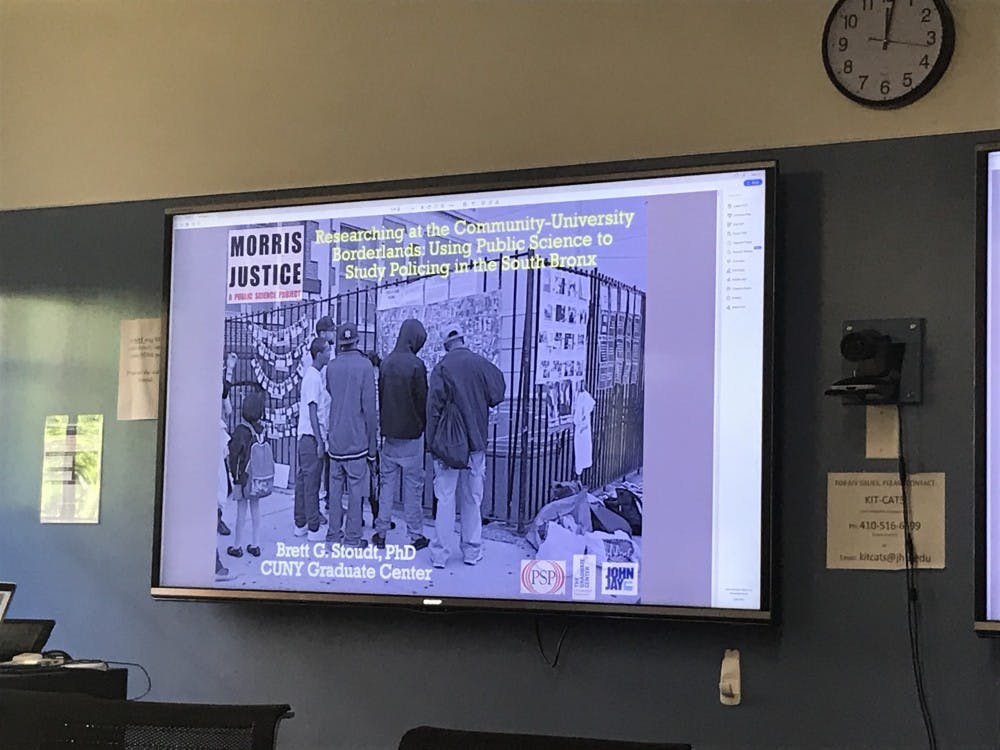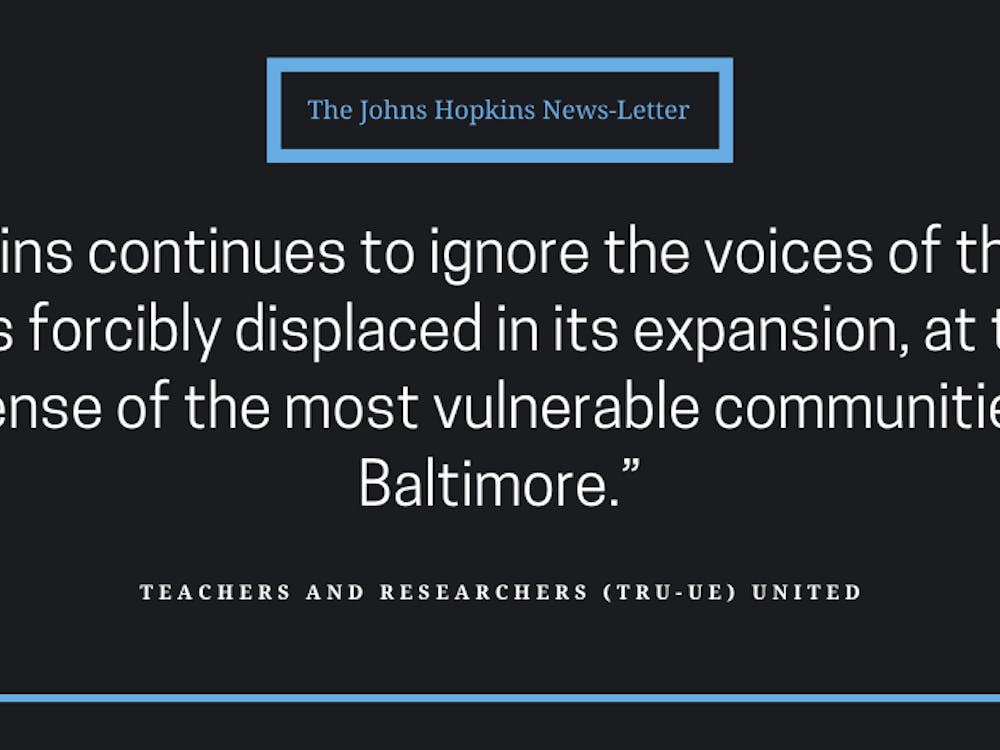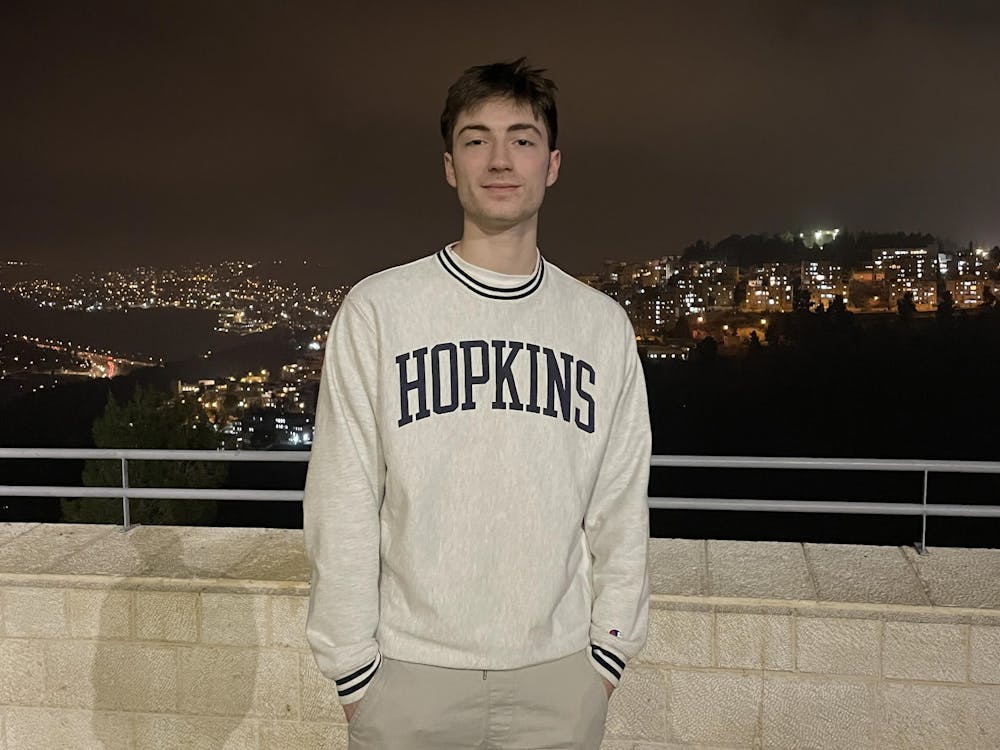Brett Stoudt, an associate psychology professor at the City University of New York (CUNY) Graduate Center, gave a talk on Friday about using public science to study policing in the Bronx, N.Y. as part of the Alexander Grass Humanities Institute’s “Engaged Humanities” Speaker Series.
Stoudt presented on the Morris Justice Project, a research study in the South Bronx neighborhood of New York City designed to understand residents’ experiences with and attitudes toward the New York Police Department (NYPD).
Stoudt explained that the Morris Justice Project started in 2011 as a response to a style of policing called “broken windows,” which focused on targeting minor offenses and misdemeanors such as jaywalking, drinking beer on the streets and being in the park after hours, with the goal of bringing down more serious, violent crimes.
According to Stoudt, a disproportionately large amount of people of color, particularly black people, were subjected to aggressive and discriminatory policing under the broken-windows style of policing.
“Almost at the time we met as a group, 700,000 stops were recorded, and we think there was many more. People were angry, and coalitions were happening,” Stoudt said. “The majority were innocent by their own statistics, meaning no arrest or summons, and even those who were arrested or had summons, most of them were dropped in court.”
Academics from CUNY Graduate Center, John Jay College and Pace University and residents of the South Bronx formed the Morris Justice Project out of concern about discriminatory police tactics. They aimed to document experiences of policing in a 40-block area east of Yankee Stadium in the South Bronx.
In his presentation Stoudt stressed the importance of collaborating with the residents of the neighborhood to produce research that is both ethical and high-quality.
“Expertise doesn’t lie solely within a university, amongst the government, doctors and other places like that. It’s widely distributed. And it’s particularly distributed among those that are disproportionately impacted by the policies or social issues that you’re doing the work on. So if we’re studying policing, it’s those people who live within the confines of aggressive policing who are going to have the most expertise and knowledge,” he said.
He called this approach to research, grounded in community knowledge and expertise, critical participatory action research (CPAR). He stated that CPAR is rooted in the belief that valid knowledge is produced only through collaboration and action and that those who are objects of the study should be architects of the process.
Stoudt explained his team’s goal was to have work that is informed and tuned in context, history, power and relationships, and tells a story using multiple forms of data and centering on the lives of people.
The Morris Justice Project met biweekly in a local library to map the neighborhood to create a plan to conduct interviews, focus groups and surveys with people of all ages from all 40 blocks. They came up with questions asking about the residents’ perceptions of home and neighborhood, personal experiences with the police, and their attitudes towards police.
They went block-by-block and surveyed over 1,000 people and then analyzed the quantitative and qualitative data collectively.
Stoudt mentioned that they found a stark contrast between their findings and the claims made by the NYPD that their practices were making the neighborhood safe.
“Everyone was blown away by the fact that there were around 4,000 stops and only eight guns found,” Stoudt said. “Now we have lots of data that suggest that [broken-windows policing] did very little to bring down crime.”
Most people that the Morris Justice Project spoke with reported feeling less safe in recent years, even as crime went down. The report also found that residents had complicated attitudes towards the neighborhood and police. The consensus was that they wanted the police to be part of the community but wanted a different kind of policing.
Victoria Harms, a visiting assistant history professor who listened to Stoudt’s talk, was intrigued by his work and his ability to engage and bring together people from a wide range of backgrounds.
“The talk was amazing, very thought-provoking, very self-reflective, very outspoken about his own intersectional identity, and how that factored into his research, and how he thought about this entirety about different neighborhoods, different classes, different power positions,” she said.























Please note All comments are eligible for publication in The News-Letter.